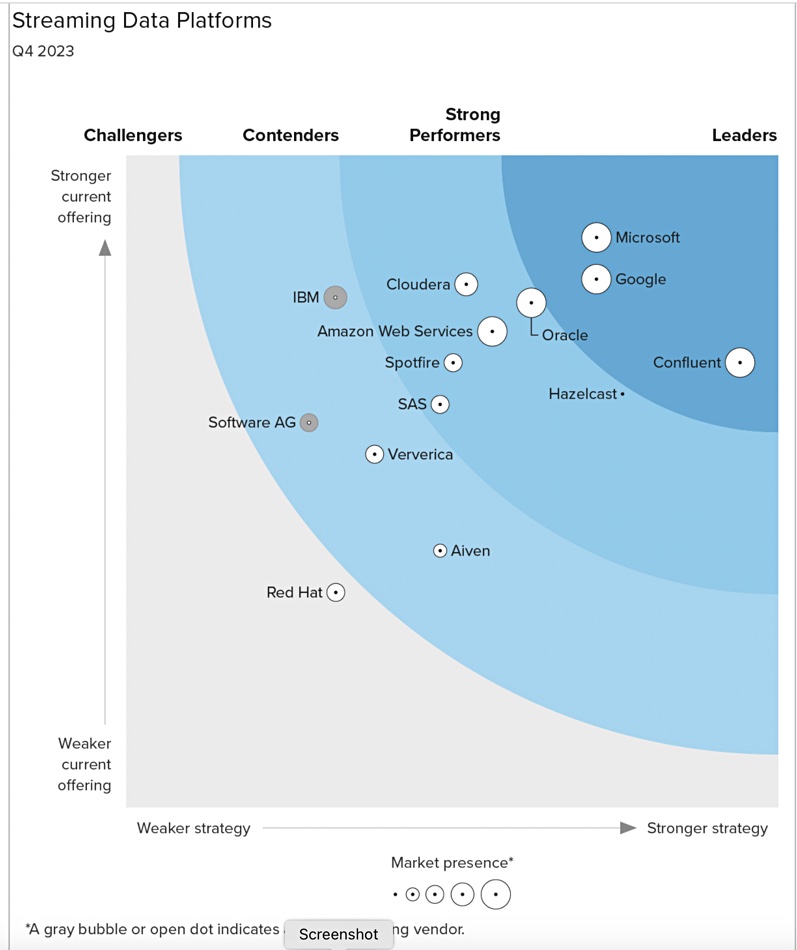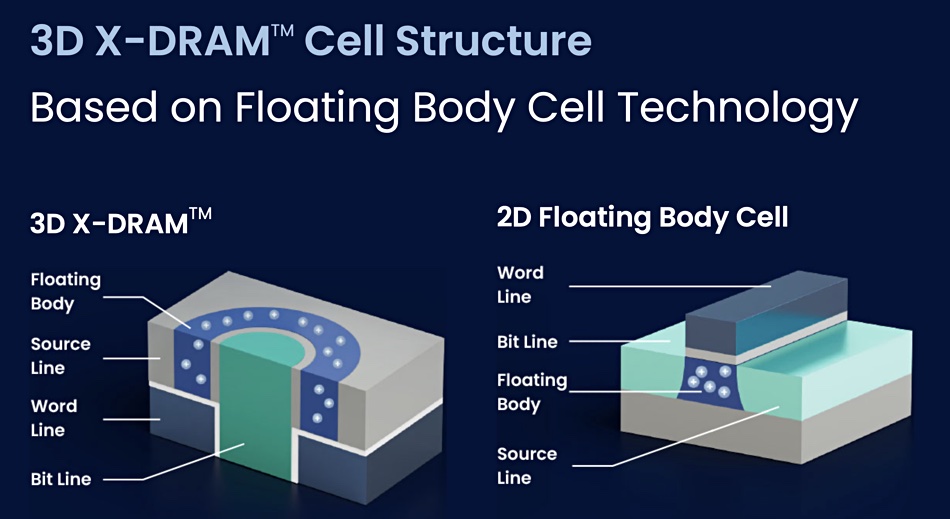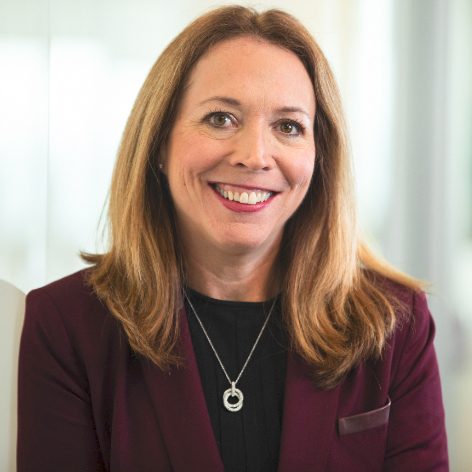MSP 11:11 Systems is launching 11:11 DRaaS for Azure, a new disaster recovery as a service (DRaaS) offering for the Azure cloud. This globally available recovery offering gives organizations customized and fully managed disaster recovery (DR) for their on-premises, Azure cloud and/or multi-cloud environments.
…
Data intelligence supplier Alation released The State of Data Culture Maturity: Research Report. Alation says that building a strong data culture is a strategic imperative for leaders. According to Alation, data culture maturity has four pillars – data leadership, data search & discovery, data literacy, and data governance. The report emphasizes the need for all four, e.g. 89 percent of respondents with strong data leadership say their organizations met or exceeded revenue goals in the past year.
….
CloudFabrix, which describes itself as the inventor of Robotic Data Automation Fabric (RDAF), launched its “Data Fabric for Observability” with dynamic Data Ingestion and Automation service (DIA) for the Cisco Observability Platform. CloudFabrix also demonstrated the use of this service for multiple application modules on the Cisco Observability Platform.
…
Wells Fargo analyst Aaron Rakers talked to Commvault CFO Garry Merrill and tells subscribers Merrill separated Commvault’s total addressable market (TAM) into two sectors: “1. Traditional on-premises data management/recovery as representing a $9-$10 billion TAM growing at an est. 0-2 percent CAGR, and 2. Cloud-based recovery market currently at a ~$2 billion addressable market growing at a 12-13 percent CAGR going forward. CVLT’s portfolio/capability breadth (including integration w/ security) and scale were key highlighted differentiators.” Rakers says: “We model CVLT’s F2024, F2025, and F2026 (FYE = March) revenue growth at +4, +5, and +7 percent y/y, respectively. With CVLT’s Subscription + SaaS momentum (now 74 percent of total ARR, which was +32 percent y/y in 2024; including $131 million in SaaS ARR vs $74 million a year ago), coupled with lessening declining/normalization in traditional perpetual + support revenue, we see increasing potential for CVLT to drive toward double-digit y/y revenue growth looking into F2025-F2026.”
…
Kafka-using Confluent was named a Leader by Forrester Research in The Forrester Wave: Streaming Data Platforms, Q4 2023. Jay Kreps, co-founder and CEO, said: “We founded Confluent in response to a critical need for reliable, scalable data streams, and we believe our placement as a leader in this category validates our approach to delivering a complete, enterprise-ready data streaming platform.” Get a copy of the report here.

…
Couchbase announced financial results for its third quarter fiscal 2024. Q3 highlights include:
- Total revenue was $45.8 million, an increase of 19 percent year-over-year. Subscription revenue for the quarter was $44.0 million, an increase of 23 percent year-over-year.
- Total annual recurring revenue (ARR) was $188.7 million, an increase of 24 percent year-over-year, or 23 percent on a constant currency basis.
- Gross margin was 88.8 percent, compared to 87.4 percent for the third quarter of fiscal 2023. Non-GAAP gross margin for the quarter was 89.5 percent, compared to 88.0 percent for the third quarter of fiscal 2023.
…
Business continuity and DRaaS supplier Databarracks launched Jump-Start, a cloud-based recovery landing zone. By using Infrastructure as Code (IaC), resources, networking, security, and governance are activated within minutes, ready for a complete recovery. It says Jump-Start delivers the quickest recovery time in a low-cost and secure solution in a disaster invocation.
…
Datadobi announced StorageMAP 6.6 with enhancements including support object storage. It can analyze object data stored on any S3-compliant platform, offering users a complete view of their unstructured data, including both file (SMB and NFS) and object (S3) data. v6.6 also provides richer file copy and movement functionality. Users can search for files based on specific metadata criteria and copy those files to a file or object target. They can easily copy files from a file server to a data lake for normalization and aggregation prior to copying (or moving) training datasets to apps for analytics and/or AI processing.
…
Recovery instructions for lost files in Google Drive were posted yesterday. They start by saying: “How to restore files in Drive for desktop (v84.0.0.0-84.0.4.0). If you’re among the small subset of Drive for desktop users on version 84 who experienced issues accessing local files that had yet to be synced to Drive, please follow the instructions for one of the following solutions below to recover your files.” The process is based on recovering files from a backup.
…
NEO Semiconductor released Technology CAD (TCAD) Simulation Data for its 3D X-DRAM. Semiconductor manufacturers and engineers use TCAD to simulate emerging technologies and optimize new products. Explorations of TCAD models and simulations reveal that 3D X-DRAM supports high sensing margins, retention times, and endurance cycles:
- < 1 V (volt) operation voltage
- < 3 ns (nanosecond) write time (cell level)
- > 20 uA (microampere) sensing margin
- > 100 ms (millisecond) data retention time
- > 10ˆ16 (10 quadrillion) endurance cycles
Conventional DRAM connects one Sense Amplifier (SA) to a Bit Line (BL) directly. X-DRAM connects one Sense Amplifier (SA) to four Bit Lines (BL) through four Bit Line Select Gates (BLSG). Conventional DRAM performs read and write operations using one word line at a time. X-DRAM allows four word lines (WL) to perform read and write operations in parallel, increasing data throughout by 400 percent during refresh operation. More info here.

“A new memory architecture with 3D DRAM technology will represent the future of memory in order to accelerate and scale DRAM to new levels,” said Jay Kramer President of Network Storage Advisors Inc. The next logical step for Neo would be to build a test chip/
…
Some succinct Pliops predictions for 2024:
- There will be a rapid adoption of Retrieval Augmented Generation (RAG) in enterprises using Vector Databases to complement the LLM foundation model.
- As inference workloads and costs grow significantly, there will be a rise in startups developing lower-cost performance silicon chips while hyperscalers pursue their custom silicon for inference and startups.
- The race to build larger, smarter, comprehensive large language models (LLMs) will continue, resulting in large organizations spending a fortune in the range of $100 million to $0.5 billion.
- Sustainability will take center stage – and the IT industry as a whole will experience momentum in higher-density computing and storage options to store and process large datasets in smaller footprints.
- There will be increased adoption of key-value stores from traditional applications to Generative AI applications for caching in the Prompt and Token phase of LLMs.
- AI-generated media content will become the norm, from basic website designs to generating songs and making Hollywood movies.
…
Pure Storage announced the appointment of Lynn Lucas as its CMO, reporting to COO Matt Burr. She was CMO at Cohesity, from where she was laid off in June. It has a CMO vacancy. She previously worked at Cisco and Veritas, and is the successor to Pure’s previous CMO, Jason Rose, who left in March.

…
Quantum announced that its Myriad all-flash, scale-out file and object storage software platform for the enterprise is now generally available for purchase.
…
Scality CTO Giorgio Regni provided 2024 predictions. He said HDDs will live on, despite predictions of a premature death, notably from Pure Storage. End users will discover the value of unstructured data for AI. Ransomware detection will be the next advancement in data protection solutions. Managed services will become key to resolving the complexity of hybrid cloud. More info here.
…
We asked VAST Data, which uses Storage Class Memory in its storage systems, how VAST works in AWS. Does it run on special hardware that includes Storage Class Memory? Or does VAST have a version that can run without SCM? VAST told us: “The VAST Data Platform on AWS leverages the local EC2 SSD (instance store) to serve both Metadata/Write Buffer (normally on SCM), and capacity (normally on QLC) layers. All I/Os are served from the local instance SSD, making it very fast compared to competing solutions. Persistency is achieved with minimal overhead, using write-only mirroring to EBS for the Write Buffer and Metadata layer, and asynchronous migration to S3 for the data layer. This works very well, thanks to the relatively large Write Buffer. Using Multi-Cluster Manager, the customer can choose burst-only mode (no persistence in AWS), and then the EBS and S3 are not used, allowing for an even lower cost scratch/burst solution.”
…
Veeam announced GA of the Veeam Data Platform 23H2 update including Veeam Backup & Replication v12.1, Veeam ONE v12.1 and Veeam Recovery Orchestrator v7. This latest release includes hundreds of new features and enhancements designed to not only protect enterprise data, but to enable customers to better recover from ransomware and cyber-attacks. New features and enhancements include:
- AI-powered built-in Malware Detection Engine performs low-impact inline entropy and file system analysis during backup for immediate detection of ransomware and malicious file management activity.
- New Veeam Threat Center highlights threats, identifies risks and measures the security score of an environment.
- YARA content analysis helps pinpoint identified ransomware strains to prevent reinfection of malware into an environment; detects the presence of sensitive data in backups (like PII, PHI and PCI data).
- Enhanced backup protection prevents accidental or malicious deletion or encryption of backups, including using additional immutability capabilities and the new four-eyes principle to prevent accidental backup or repository deletion.
- Greater security for cloud backup ensures least privilege access to backup and recovery tasks with more granular IAM permissions, as well as immutable backups for Amazon RDS PostgreSQL databases.
- Security & Compliance Analyzer continuously verifies your backup infrastructure hardening and data protection approaches against best practices to ensure recovery success.
Backup enhancements include:
- AI-powered assistant driven by large language models and using product documentation as a context provides real-time access to Veeam’s knowledge, improving efficiency.
- Object storage backup strengthens recovery with powerful granular restore capabilities for on-premises or cloud object storage data, secured by an ultra-resilient immutable backup.
- Expanded workloads in the cloud to protect Amazon S3, DynamoDB, Azure Blob, Azure virtual networks, and Google Cloud Spanner.
- Automated cloud recovery validation saves time by automating the manual post recovery tasks required when recovering an on-premises workload into Microsoft Azure.
- Veeam App for ServiceNow offers open integration leveraging ServiceNow workflows to monitor backup jobs, sessions and restore points in a pre-built dashboard with automatic incident creation.
- New plug-in for IBM DB2 and support for Linux and SAP HANA running on IBM Power eliminates the need for multiple backup solutions in an IBM datacenter.
- IBM 3592 “Jaguar” tape support reduces costs without compromising security by combining Veeam’s air gapped data protection with low-cost storage at enterprise scale.
- Expanded Enterprise Capability with support for large volumes on NetApp ONTAP FlexGroups, instant recovery for PostgreSQL, and integration with native backup immutability on EMC Data Domain and HPE StoreOnce Catalyst Copy storage
.…
Veeam announced the promotion of Tim Pfaelzer to GM and SVP of EMEA. He is responsible for Veeam’s business operations across all segments and markets across the region.
…
VergeIO announced the immediate availability of VergeOS Small Data Center (SDC) Edition. It is more than a competitive swap out of VMware Essentials, being a significant capability upgrade and lowering costs. VergeOS SDC includes everything included in VMware Essentials plus advanced storage services, live virtual machine migration, advanced layer two and layer three networking capabilities, and ransomware protection. Also, unlike VMware Essentials, the VergeOS SDC Edition isn’t limited to three servers.
VergeOS is priced per physical server, regardless of resources. With the launch of VergeOS, SDC organizations have the opportunity to improve cost savings even further. Any customer who participates in a demonstration of the VergeOS before December 15th will receive an offer to buy one node license and get the second free, or buy two node licenses and get two node licenses free (matching the term of their subscriptions).
…
Veritas is scaring us with research revealing that one in ten business execs fear their business will not survive the next 12 months, while half of executives and IT teams say data security is one of the biggest threats facing their business. It says the study shows the extent to which there is fear that cybersecurity presents a very real threat to businesses’ survival, and in turn how many businesses are fearful of their survival over the next 12 months. For more survey findings on the global picture, download the report: Data Risk Management: The State of the Market—Cyber to Compliance.
…
BMC-acquired Model9 has competition. VirtualZ Computing, which provides the Lozen out-of-the-box product to connect mainframes to hybrid cloud for bi-directional data access, has raised $2.2 million in seed financing led by Next Frontier Capital. Additional investors include 2M Investment Partners, Innosphere Ventures, and Next Coast Ventures. Including prior funding, VirtualZ has raised $4.9 million to date. The Lozen product, available now, enables hybrid cloud, SaaS, distributed and custom applications to gain real-time, read-write access to mainframe data. Data isn’t moved; instead, all apps share the data equally as a peer with mainframe applications. The software installs in minutes and runs on the zIIP engine, consuming a fraction of the capacity of a general processor. Minneapolis-based VirtualZ says it’s the only woman-founded mainframe company in history – but it was actually co-founded by a woman, CEO Jeanne Glass, and two men, CTO Vince Re and SVP GLobal Alliances Dustin Forum.








